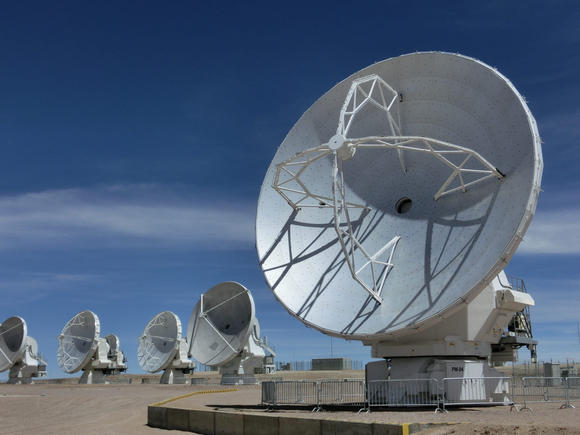TOKYO — An international team of researchers is set to launch an ambitious project in April to observe a super-massive black hole. Designated Sagittarius A*, the region resides at the center of the Milky Way about 26,000 light-years from the Earth. It is estimated to have approximately 4 million times the mass of the Sun.
Researchers will try to observe the exact size and shape of Sagittarius A*, or Sgr A*, using an array of radio telescopes located at seven locations around the world, including Chile, Hawaii, Mexico and the Antarctic. If successful in shedding new light on this mysterious region, the project could lead to a rethink of modern physics.
Scientists theorize that black holes are formed after a star explodes at the end of its life in an event called a supernova. It is impossible to observe a black hole due to its strong gravitational forces that prevent particles and even light from escaping. A black hole does, however, emit X-rays and radio waves as it absorbs stars and gas around it. At present, the existence of black holes can only be confirmed by observing these waves. Most other details — such as their shape — are still unknown

The project is comprised of researchers from the National Astronomical Observatory of Japan, University of Tokyo and Massachusetts Institute of Technology in the U.S. The global array — which includes the ALMA telescope in Chile, operated by Japan, the U.S and Europe — essentially forms one huge telescope focused on Sgr A*. To get an idea of just how powerful the array is, think of a parabolic antenna with a diameter of 9,000km.
Data from the array will be collated in a supercomputer to produce high-resolution images of Sgr A*.
The Subaru Telescope in Hawaii, operated by the NAOJ, is one of the world’s most powerful optical telescopes. In terms of resolution, however, even this behemoth is dwarfed by the new array. According to project members, images will have about 1,000 times the resolution of those captured by the Subaru Telescope, making it possible to see an object the size of a compact disc on the Moon.
Sgr A* emits radio waves when it absorbs gas and dust around it. If the project goes as planned, researchers will be able to obtain images of the black hole surrounded by the gas-dust mixture. “We want to capture an actual image of a black hole,” said NAOJ professor Mareki Honma, who heads the Japanese team.
The project is scheduled to run through 2018 and beyond, with improvements in resolution expected along the way.
Huge black holes are thought to exist at the centers of some galaxies, but scientists are still unsure how they form. The Sgr A* project hopes to solve this mystery. Researchers also want to discover how black holes are related to the birth of galaxies.
The German physicist Karl Schwarzschild predicted the existence of black holes a century ago based on Albert Einstein’s general theory of relativity. This project could help verify Einstein’s theory, or perhaps unexpectedly reveal something that could shake the foundations of modern science.
Source : hasia.nikkei.com
Collected by RG











